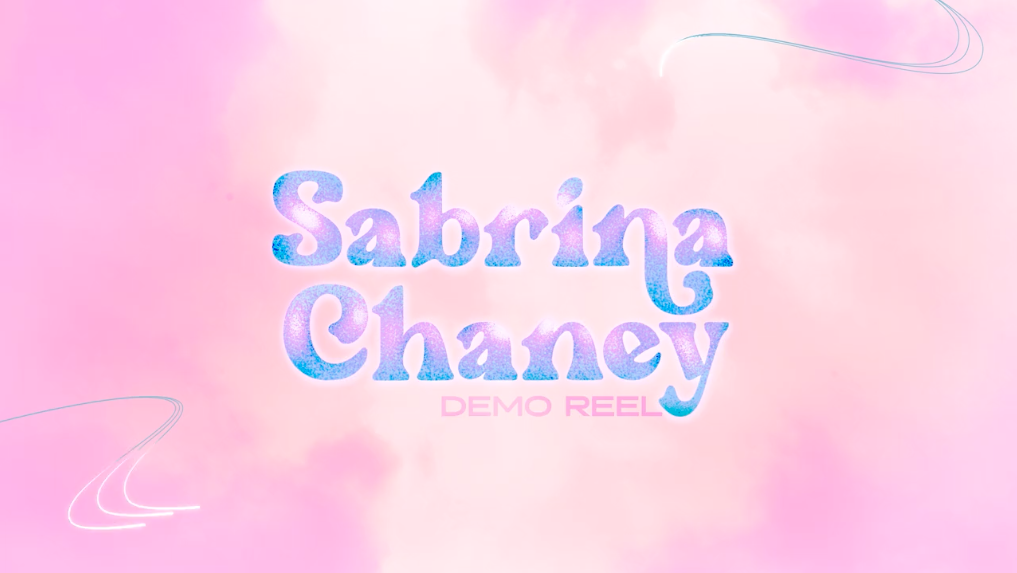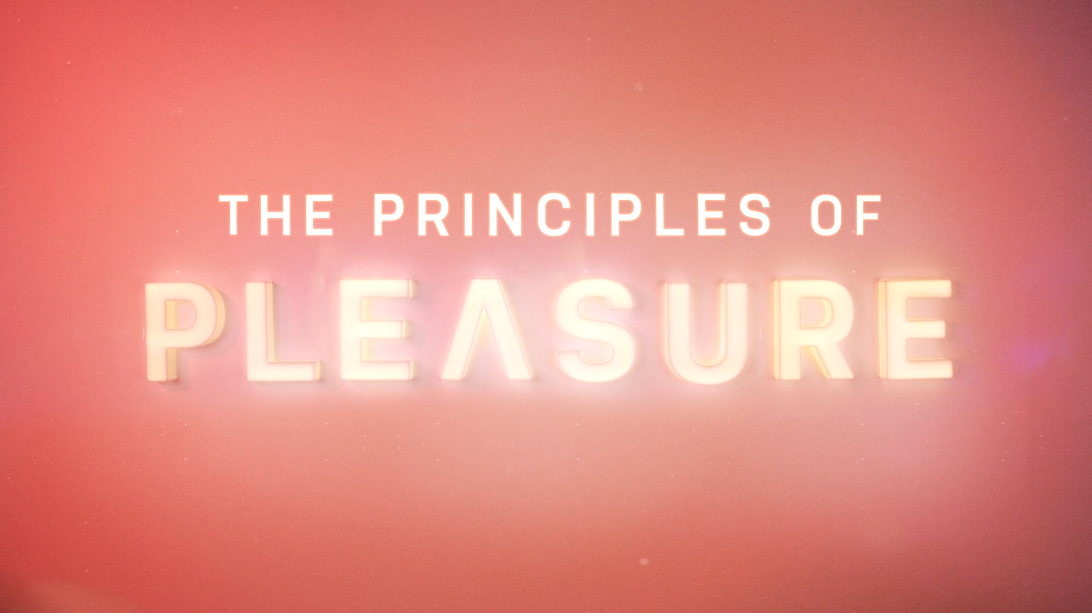Takeover Tuesday with Lili Boisrond
An interview with Lili Boisrond: a mixed media artist specializing in animation and design.
Q&A with Lili Boisrond.
Read time: 5min
Bella Alfonsi:
Thanks so much for joining us for Takeover Tuesday, Lili! For those who aren’t familiar with you or your work, please give us a lil’ intro!
Lili Boisrond:
Hi! My name is Lili, I’m a mixed media artist specializing in animation and design. I grew up in Paris and headed to NYC for university where I ended up staying for 8 years. I’m now back in Europe and rediscovering the pleasures of French cheese vocabulary!
Bella Alfonsi:
How did your career start? Did you always know that you wanted to get into the motion design industry?
Lili Boisrond:
My pursuit of motion design actually started on a miscommunication in choosing a semester class in college. Thinking I enrolled in a drawing class, I ended up in “drawing for storyboard”, which led to experimental animation and later to narrative animation. It was mesmerizing because until then I had too many passions to see a clear career road, always having to choose between visual arts, music and storytelling. The animation world and motion design showed me they can coexist in a larger, multifaceted creation. I love the idea of a “global” piece when it comes to making an animation. Goosebumps.
Bella Alfonsi:
The motion design industry is full of folks who have extensive schooling and some, none at all. In what ways has having a formal education in visual arts, art history, and jazz affected your career? Would you recommend higher-education to others?
Lili Boisrond:
This is a tough question for me. I very much enjoyed taking the liberal arts road for education, but I think it’s such a personal choice. I had no idea what I wanted to do and couldn’t pick between one artistic or academic area so it was an ideal mix for me. When I started working in an animation studio fresh out of college I realized I had literally no technical knowledge. No kidding, on my first day I asked a freelancer sitting next to me how to make something bigger in Photoshop...
I worked my way up with intensive ‘head banging against the wall after effects tutorial marathon nights’ and learned things quickly, but I always wondered what things could have been if I had attended a school like SVA.
Looking back now, I definitely wouldn’t change the path I took and I think there are tons of advantages to being self taught - you have to be quick on your feet and I think it makes you a creatively independent person faster. I’m also happy I get to feed my work with a broader source of education whether it be music, philosophy or literature, it makes you stand out and you can always nourish your technical abilities later on!
Bella Alfonsi:
What’s the animation scene like in Paris? Are your clients mostly French or do you find yourself working more internationally?
Lili Boisrond:
I’ve only been back in Paris for a year now, and I have to admit, the scene is not as fluid and funky as New York. For starters, the freelancing system still feels very new here and it takes way longer to establish a solid relationship of trust with studios. In the US, producers are proactive and understand that if you did a good job in another animation shop, there’s no reason you won’t do great in theirs. Well Parisian studios and agencies don’t quite work the same way… Over the course of one year I would say I worked 90% with my US contacts, and 10% were French gigs that took weeks to find and book. When you’re still on NYC rhythm, the French work system feels SLOW.
Bella Alfonsi:
You’ve worked with a diverse group of impressive clients (IKEA, Lyft, New Balance, etc.)! What advice do you have for freelancers first starting out who dream of working with clients like these?
Lili Boisrond:
What worked best for me has been to constantly nourish relationships with studios. On five projects maybe only one will be creatively interesting to you, but for all the times you helped out on a project that was never-ending, all the not portfolio worthy projects, the day will come that you are their go to person of trust. And that day you will be leading the project and make the creative decisions you were only dreaming of taking!
And if you find the time, don’t underestimate the power that personal projects can have on your portfolio - studios can see how you can handle a project from head to toe and that you’re serious about your work. Make sure you sprinkle a nice explanatory case study breaking down your process on top, and voilà.
Bella Alfonsi:
You’ve worked on so many fun projects over the years. Are there any in particular that really resonate with you?
Lili Boisrond:
Yes! The last project I did this summer before starting a year of studies at Gobelins comes to mind right away. My favorite animation studio - Mighty Oak - asked me to art direct a stop motion project for L.L Bean. It’s not often as a freelancer that you get to work on a project from stage A to Z delivery day, besides personal projects. Since I never specialized technically, I’m the Swiss army knife kind of motion designer and it was just wonderful to use all my toolkit in one project… storyboarding, designing, stop motion, compositing etc. Hopefully it’s the first of many more projects like this.
Bella Alfonsi:
It feels like people are freelancing more now than ever. What’s something you wish you knew before going freelance yourself?
Lili Boisrond:
I was lucky enough to have the advices of friends in the industry who were already freelancing rockstars, and I will say what they said to me - never undersell yourself, only share projects that showcase something you like doing because that’s what people will call you for, start building a strong list of animation contacts and nourish it with clever updates. In short : put yourself out there!!
Bella Alfonsi:
When you find yourself in a creative rut, how do you get out of it? What or who inspires you?
Lili Boisrond:
A few things have worked for me over the years. I’m a strong believer in talking your way out of a creative rut. Your friends and family might not be into discussing style frames or art direction, but even saying things out loud helps. The power of voicing out a problem is incredible, and the best is having a buddy to bounce ideas off of. I’ve been torturing my husband for years and it’s worked wonders!
A second way out is to stop thinking about it. You may think taking a walk or heading out to an art show will be a waste of time when you’re on a deadline, but it will most certainly make you snap out of your blockage faster than sitting at your desk pulling your hair. Who knows what you might see or hear along the way, and by giving your brain a break it will thank you creatively.
Bella Alfonsi:
What do you think the future of motion design looks like? Anything you’re excited about or things that are concerning to you?
Lili Boisrond:
I’m continuously in awe of what humans are capable of creating, the new styles that come out every year, and how we still find novel ways to tell stories to others. But with the huge acceleration in AI with tools like Dalle 2 and Midjourney, I’m concerned (yet still hopeful!) about what the future of our creative industries will look like. Will young teens still doodle on a drawing pad or dab in creative writing when the most common tool of creativity will be writing a prompt for an AI to do it? I’m hoping it will open a door to many creative minds and new ways of thinking, but it does raise a lot of questions on where we’re heading.
Bella Alfonsi:
Any final advice/takeaways?
Lili Boisrond:
No regrets! This is my #1 rule in life. I live by it, I work by it, and most importantly I eat by it.
Takeover Tuesday with Sabrina Chaney
An interview with Sabrina Chaney: Post-Production Lead at Mighty Oak in Brooklyn.
Q&A with Sabrina Chaney.
Read time: 5min
Mack Garrison:
Sabrina! Thanks so much for taking the time to participate in our Tuesday Takeover series. For those not familiar with you and your work, can you provide a little background on yourself and your creative style?
Sabrina Chaney:
Hey! I was born and raised in Houston, Texas. I went to school for Animation at the Savannah College of Art and Design. Now I work as the Post-Production Lead at Mighty Oak in Brooklyn, New York. My creative style is an amalgamation of all my interests: comics, animation, music videos, sculpture, and patterns. My main passion is stop-motion animation, so typically I like to imbue whatever I make with some kind of handmade element or texture.
Mack Garrison:
Oh man - love the word imbue! How did you initially get into the motion design industry?
Sabrina Chaney:
After I graduated from college I knew my portfolio wasn't where it needed to be. I was applying everywhere under the sun and it felt like every email was being swallowed into the void. Nothing really kicked off until I took a few School of Motion courses and re-made my portfolio and reel from scratch while living with my parents. You can see the result of that work here. Matt Vojacek from Made by Things was the first person to take a chance on me and give me an internship - working remotely long before Covid, might I add - and that started my freelancing career which I continued for three years after I moved to Brooklyn in 2017.
Mack Garrison:
There are so many talented folks in our industry, who are some of the people you look up to?
Sabrina Chaney:
The people who inspired me the most when I was starting out are all pursuing their own big projects these days. Isaiah Saxon of Encyclopedia Pictura is directing a movie for A24. Charles Huettner, Benjy Brooke, and Sean Buckelew are adapting the Scavengers short into a TV series for HBO Max. In general, I look up to people with big imaginations who do their own thing independently and feel compelled to share their work (remember Late Night Work Club? Bring that back!). Outside of mograph, I adore the work of Meredith Gran (of Octopus Pie and Perfect Tides fame) and Jonathan Bree. They are both master storytellers in their respective fields, and I feel transported by the worlds and characters they've created.
Mack Garrison:
You work at a really cool studio called Mighty Oak who specializes in stop motion, 2D, 3D and mixed media! What's it like working there?
Sabrina Chaney:
I had already built a working relationship with Mighty Oak while I was freelancing, and they were always my favorite client to work with. I joined the team full-time in March 2020. Everyone on the team is a creative problem-solver, and we bring our unique approach and point of view to every brief. Stop-motion is our favorite medium to work with and we bring that tactile sensibility to every project, whether it's animated in-camera or animated completely digitally. As the compositor, I get to solve a new puzzle every day, which makes my work rewarding and enjoyable. I love the variety of work that we attract, and I especially love when we have the opportunity to push ourselves with new techniques we've never tried before. Like a mighty oak, we are continuing to grow every year!
Mack Garrison:
What are some of your favorite projects you've had a chance to work on?
Sabrina Chaney:
During 2020 and shortly after I was brought on staff, we created animated sequences for Mary J Blige's My Life which is now streaming on Amazon. That project holds a special place in my heart because whether the world was falling apart or I had something going on in my personal life, I always had something beautiful to look forward to at work. It was also the longest-running project we had worked on as a team, so it felt good to practice consistency and surpass our benchmarks together as the months went by. We developed a painterly frame-by-frame 2D workflow using Procreate and After Effects, inspired by the work of our creative director Michaela Olsen. I can look back on what we made and feel proud of what we accomplished. I was also invited to the film premiere in Lincoln Center along with the rest of our team- and Mary J Blige herself was at the afterparty! We made direct eye contact! I'll never forget it.
Similarly, in 2021, we created animated sequences for the Netflix series Principles of Pleasure. Each episode has a different art direction depending on the given topic, and we used a mix of stop-motion animation with props, pixelation with human actors, collage, frame-by-frame 2D animation, and motion graphics to illustrate topics relating to sexual education and female pleasure. We used a lot of the lessons we learned during 2020 and applied it to the production of PoP. We harnessed the momentum of the previous year to create something fresh and different. Those projects combined offered us a lot of fun and challenging work during the pandemic, which is something I'm still grateful for.
Mack Garrison:
Looking at your reel, you've really done a phenomenal job with your compositing skills! Could you talk a bit about your approach in making a shot feel perfect?
Sabrina Chaney:
Consistency is key. It's not about whether a shot is perfect, it's about whether the shot feels believable. Compositing is a lot like being an illusionist who can do card tricks: of course we may know what lies up our sleeve, but all the audience sees is magic! What I love most about working in After Effects is that there are a thousand ways to achieve a desired result, so there is no "wrong" or "right" approach. It all boils down to the needs of each shot and making sure the hero product or character can shine without any distractions.
Mack Garrison:
What are some things everyone should think about when they're compositing animations?
Sabrina Chaney:
Compositing encompasses a lot of different techniques, including green-screening, rotoscoping/masking, special effects, motion graphics, color correction, and rendering. Each of those skills could be its own visual effects discipline with its own specialized software. I tend to keep everything as simplified as possible to avoid getting overwhelmed, and I find this practice also makes it easier if I need to pass off a shot to somebody else. By simplified I mean things like keeping my project folders organized, using only the most necessary layers in my timeline, and frequently reducing my project to trim down on unnecessary files inside of my .aep. I find that these small acts of tidying up help me stay focused on the compositing work that really matters instead of getting caught up in the weeds, overcomplicating things, and then causing trouble for myself later in a project when I can't make heads or tails of my project file.
Mack Garrison:
Your work and Might Oak's has a very hand-crafted feel. I'm curious what your thoughts are around the development of A.I. Are you worried about what it could do to the industry? And how do you think it will affect the stop motion space?
Sabrina Chaney:
Honestly, I'm very ambivalent and non-threatened by A.I. People have already been creating 3D animation that looks like claymation for years, and projects like The Lego Movie directly reference stop-motion animation techniques. Technically stop-motion has already been made obsolete. People simply love it too much to let it die! If A.I does have a place in the process of creating stop-motion animation, then it'll probably occupy a space much like rapid prototyping technology, which allowed Laika to make characters more expressive using 3D animated faces in Coraline and is now an industry standard practice.
Mack Garrison:
Any advice you'd give to the next generation of creatives?
Sabrina Chaney:
I grew up Extremely Online from middle school through college, migrating from deviantART to Tumblr to Twitter and Instagram in an effort to post and share my work. I never had much of an audience, and I found it more draining than energizing. At the end of the day, I'm not sure how much good it did when it came to actually getting work. By far the best networking connections I've made were from reaching out to people directly via email, using the Internet to do my own industry research, and meeting people face to face at in-person events. Your portfolio speaks for itself. If you feel pressured by social media, I recommend deleting your apps for a temporary period and dedicating the time towards things that inspire you without any plans to share what you've done. Maintaining some semblance of privacy can be intensely freeing, because you're allowed to make mistakes, learn, and experiment without subscribing to trends or comparing yourself to others.
Mack Garrison:
Anything else you'd like to add?
Sabrina Chaney:
I want to place a special shoutout to Panimation NYC! Panimation meetups were how I met many of my current friends and peers right after I moved to New York City when I didn't know a soul. Coming out of the pandemic, I learned how easy it can be to become isolated. It helps to get involved with a community of like-minded people who support each other.








